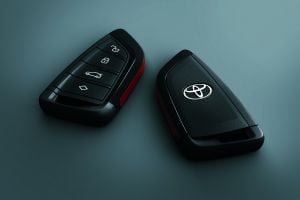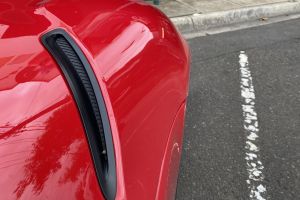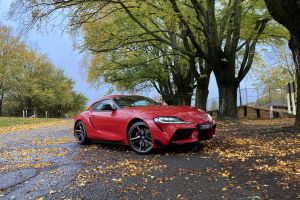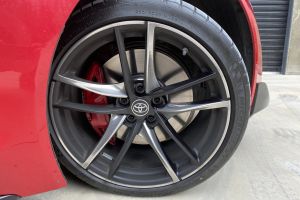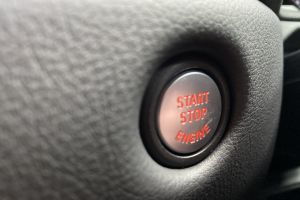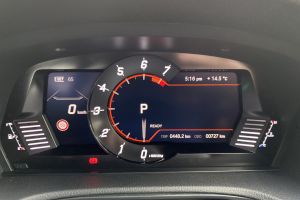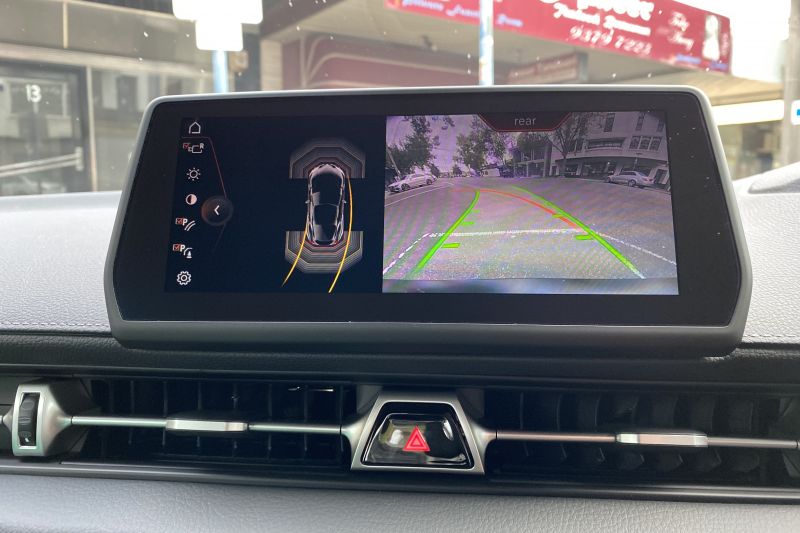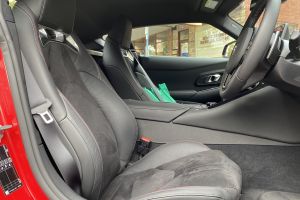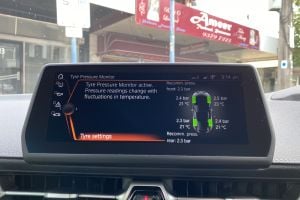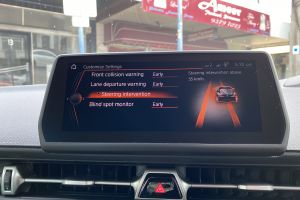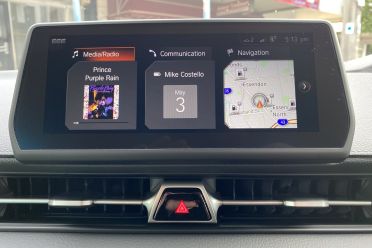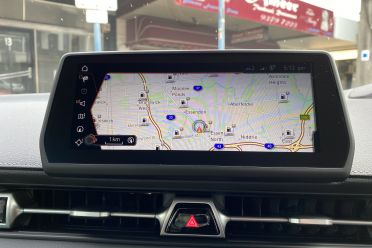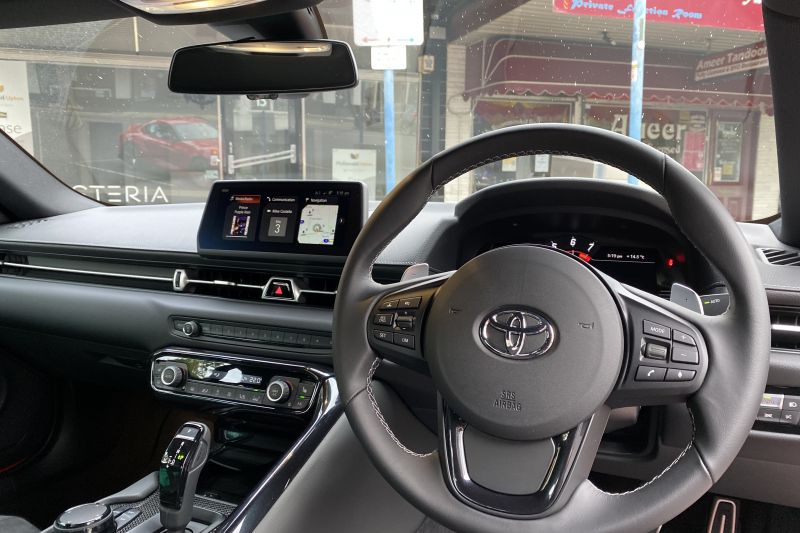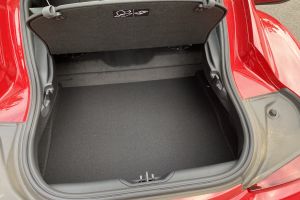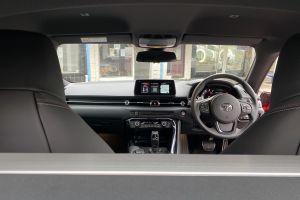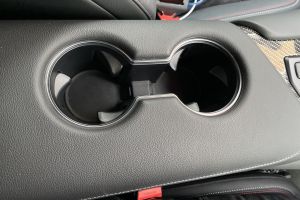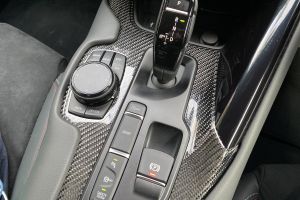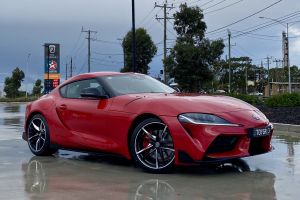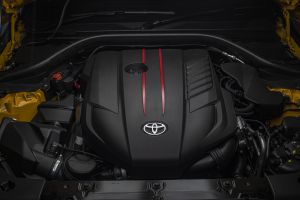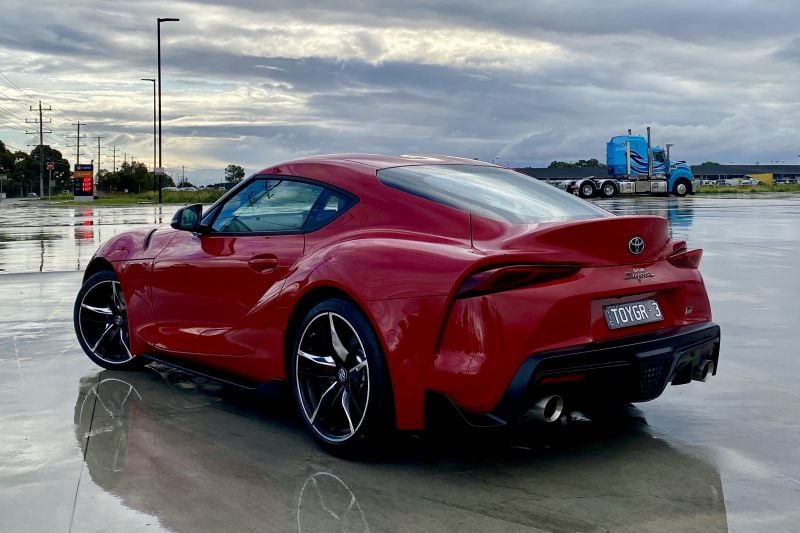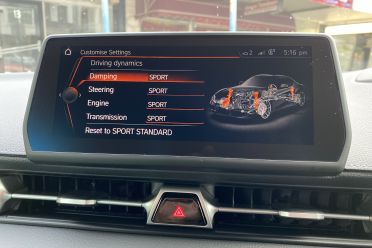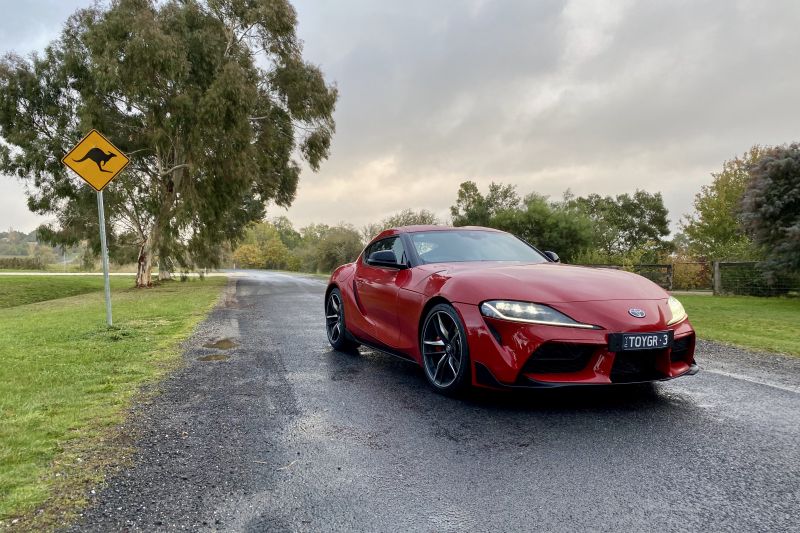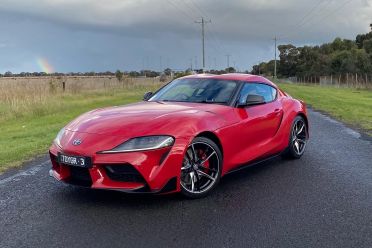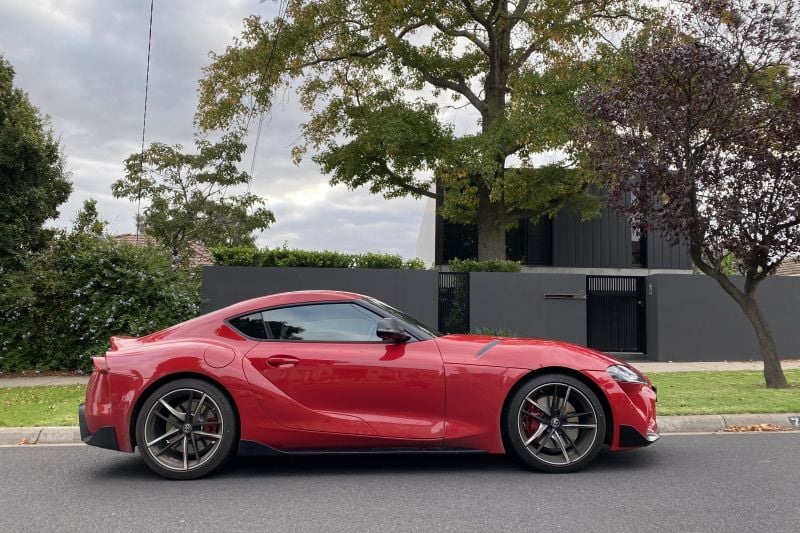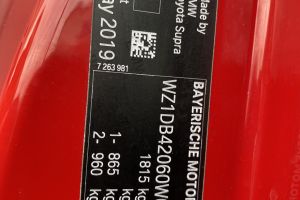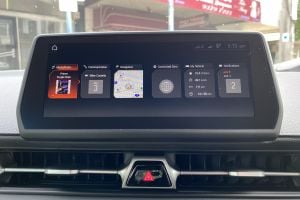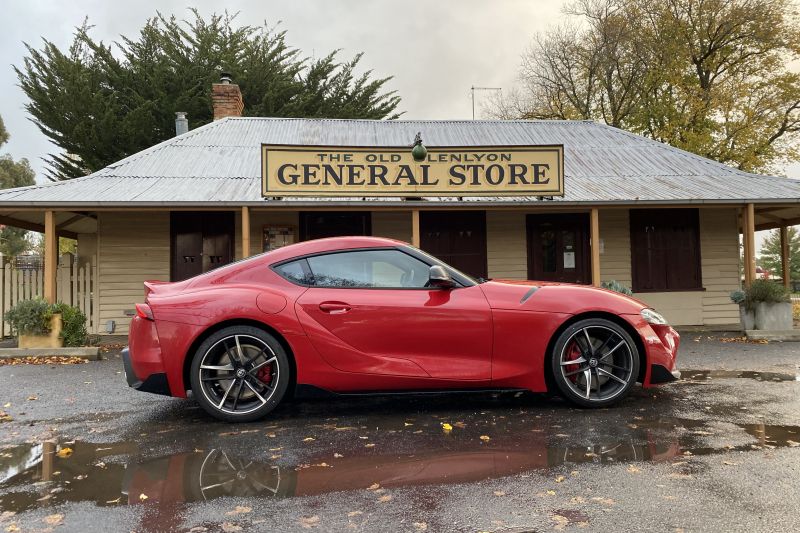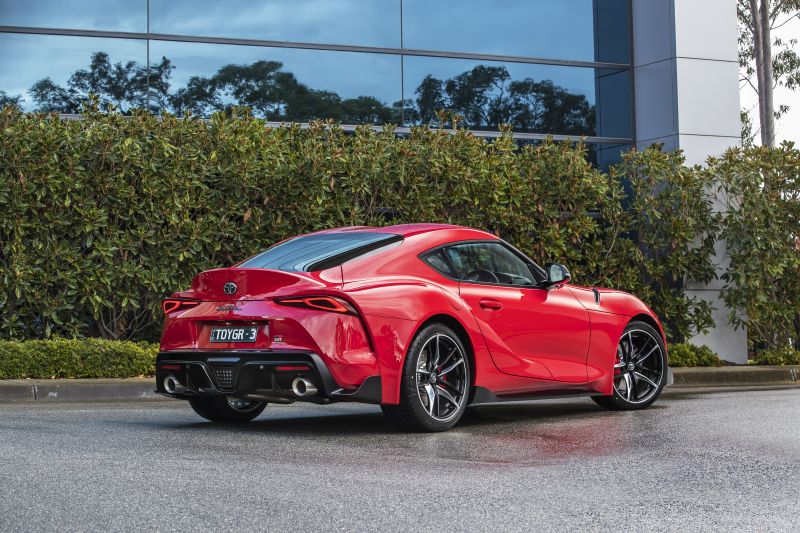The fact a fifth-generation Toyota Supra exists to grace showrooms is something of a minor miracle, a clear statement of intent from the world’s biggest carmaker.
There is a tendency among brands to play it safe by investing in projects guaranteed to make money. Projects like another SUV with a sloping roofline badged as a coupe.
Look at the list of sports car names currently in hibernation: Nissan 200SX/Silvia, Honda Integra and Prelude, Mazda RX-anything… maybe you can think of others.
At the end of the day, developing a two-door performance car is expensive, and their generally modest sales make it hard to recoup that investment. So brands taking this path do so for other reasons.
Toyota’s is instruction from the very top. Akio Toyoda is an enthusiast, and a capable steerer, who has vociferously demanded the company’s cars become more exciting to look at and to drive. It seems perhaps that reliability is great, but not sufficient as a sole purchase motivator.
It’s no secret this Mk5 Supra wouldn’t exist without BMW, and its Z4 convertible twin-under-the-skin.
But the same applies in reverse too, despite the heavier use of BMW bits. And both outsourced the actual production to Magna Steyr in Austria. It’s a meeting of the minds between very different organisations.
For one thing, this return after a near two-decade absence (the A80 died in 2002) is compact: a smidgen less than 4400mm long and 1300m tall, sitting on a 2470mm wheelbase with tracks around 1590mm. And extremely aggressive to behold.
Its proportions are classic FR, meaning a contextually long bonnet and swept back windscreen. It harks to Toyota’s 1967 2000GT, but there’s also the race-car-like front bumper, broad rear haunches, and the way the sheetmetal looks tight and stretched over the car’s very bones.
There are some fussy details, no shortage of shut lines and origami-like creases, not-yet-functional vents closed off with plastic partitions and the like. But it’s a design that means business, and enables the golden 50:50 weight distribution. Whether you love or hate it, you’re looking at it.
How much does the Toyota Supra cost?
The GR Supra GT costs $84,900 before on-road costs, while the GTS grade you see here costs $94,900 before on-roads.
That latter price is about $12,000 cheaper than an automatic BMW M2 Competition, about $24,000 cheaper than a Porsche 718 Cayman, and a whole $30,000 less than BMW’s Z4 M40i soft-top that runs a retuned version of the same engine.
On the other hand it’s $28,000 more expensive than a Ford Mustang GT coupe, and $30,000 more than Nissan’s elderly 370Z in end-of-the-run Nismo guise.
What do you get?
Both grades have LED headlights with adaptive high-beam, auto-folding side mirrors, bespoke Michelin Pilot Super Sport tyres, rain-sensing wipers, dual stainless steel exhaust pipes, heated and powered leather bucket seats, digital trip computer, fake carbon-fibre trims, and an electrochromatic rear-view mirror.
There’a also a proximity key, dual-zone climate control, wireless phone charging, a reversing camera, satellite navigation, voice recognition, and an 8.8-inch touchscreen with a BMW iDrive rotary dial controller, digital radio, and Bluetooth/USB inputs.
For $10,000 extra, the GTS takes the wheels from 18-inches to 19″, and gets 15mm larger-diameter rear brakes and red calipers; metallic pedals; a head-up display (HUD); and an uprated 12-speaker JBL surround-sound audio system.
You could argue the GT is actually the better value offer.
Is the 2020 Toyota Supra safe?
There’s no recorded NCAP crash test of the Supra, though the BMW Z4 has a 2019 five-star rating.
It scored 97 per cent for adult occupant protection, 87 per cent for child occupants, 91 per cent for vulnerable road users, and 76 per cent for safety assist.
Standard features include seven airbags, a pop-up bonnet for pedestrian impact reduction, tyre-pressure monitor; blind-spot monitoring, autonomous emergency braking that can also detect pedestrians and cyclists in the daytime; lane-departure alert with steering assist, a speed limiter; and active cruise control.
What is the 2020 Toyota Supra GR like on the inside?
Ok, the elephant in the room. A scan around the cabin reveals the following features come direct from BMW: steering wheel buttons, paddles, stalks, gear shifter, faux carbon-fibre trims, the infotainment screen, head-up display (HUD), iDrive rotary controller, air-conditioning controls, headlight buttons, and the volume dial.
Luckily, it’s also built with the same quality and attention to detail, and has the same driver-oriented ergonomics. The steering wheel has the BMW-standard overly fat rim, but there’s nothing else about the ergonomics to whinge about.
The Toyota instrument cluster is crisp and clear, and a welcome differentiator, and every touchpoint and function controller falls quickly and easily to hand.
The Supra is a very low car, only 1292mm tall with 119mm of running clearance. You sit behind the car’s midpoint and look out over the long bonnet, deep within the comfortable bucket seats that hug you like a long-lost friend rather than squeeze you like a Mafia racket collector. Be aware that, despite the blind-spot monitor, the rear blind spots are huge, and the car’s lowness means it takes some effort to squeeze in and clamber out.
The central screen runs BMW’s operating system and is simple to navigate either by the dial, shortcut buttons or touch, though it lacks Apple CarPlay/Android Auto, and you don’t get access to BMW’s ever-evolving Connected Services and Store.
Unlike Supras of old this is strictly a two seater. Behind you is a stiffening brace, and the carpeted flat surface is about useless as a storage area. The boot can hold 296 litres, and under the floor is a tyre repair kit only. There’s no doubt a 2 Series or any hot hatch is more practical than this corner-carver.
What’s under the bonnet?
Not a 2JZ.
Its BMW twin-scroll turbocharged inline-six with variable valve timing has a 3.0-litre displacement and makes 250kW of power between 5000 and 6500rpm, and 500Nm of peak torque across a large part of the rev band: 1600 to 4500rpm.
That’s the same state of tune as BMW’s outgoing M240i rather than the M2 Competition/CS. Late this year, Toyota will introduce a 285kW/500Nm version of the engine to the Supra, bringing it into line with the Z4’s outputs.
The engine is mated with ZF’s ubiquitous eight-speed torque-converter automatic with paddle shifters, sending drive to the rear wheels. There’s no three-pedal option for manual enthusiasts.
The 0-100km/h dash can be clocked in a sprightly 4.3 seconds out to the governed 250km/h top speed, while the best-case fuel economy in Eco mode with stop/start active is 7.7L/100km.
I averaged 8.2L/100km on a largely extra-urban route, with a few standing sprints and some dynamic sequences. Toyota’s media sheet says 91 RON fuel is okay, but we’d be using premium.
How does the 2020 Toyota Supra GR drive?
The B58 six-pot’s best attribute is its smoothness. If the turbo system has any spooling-led lag, it’s imperceptible, and while it’s not a screamer, it’s incredibly torque-laden.
Engine noise is artificially plumbed into the cabin through the speakers, so the exhaust has an audible bark and crackle as you move through the gears, though it’s more go than show.
The ZF 8AT in BMW’s applications has always been a byword for transmission intelligence, and this iteration is no different. Save the paddles for a track day, because its management system is smarter than you. In Normal mode it defaults to higher ratios to save fuel, but in Sports mode it holds lower gears longer.
Of course, every true enthusiast longs for a manual gearbox, but BMW’s are frankly a little rubbery, so maybe we dodged a bullet.
Dynamically, the Supra GR feels more like a precision tool than a blunt instrument, but with a level of stability and refinement that puts it well ahead of the more skittish and skate-y 86.
While I’ve read of some complaints regarding the ride stiffness, I’d politely suggest that there are far worse daily drivers out there than the Supra. Take the dampers out of their stiffer sports setting and the comfort over corrugations belies the slim-sidewall rubber, though the suppression of noise, vibrations and harshness (NVH) struck me as a little underdone.
While much of the components are straight BMW, Toyota’s engineers submitted tunes the front double-joint MacPherson strut and rear multi-link layouts for this car specifically.
Engine torque is sent to the rear wheels via an electronically actuated limited-slip diff that can shuffle outputs across the axles, to a percentage ratio of 100:0. The steering is quick, just 2.1 turns lock-to-lock, and the two driving modes (Normal and Sport) alter the throttle response, shift mapping, LSD operation, steering weight/resistance, and damper firmness.
While it’s no Lotus, Toyota slashed mass from the 1495kg Supra by using aluminium for the bonnet, doors and wheel arches, and the rear hatch is made from a composite of polypropylene and fibreglass. Fun fact: the Supra’s claimed torsional rigidity betters that of the carbon-fibre monocoque Lexus LFA supercar.
What I most enjoyed about the Supra was the sense of fun it offers. It doesn’t entirely handle as if on rails, because any heavy application of the throttle leads to the rear kicking outwards ever so slightly. Yet the tyres don’t lack grip when it counts, and the quick steering alongside the balanced chassis makes this as scalpel-like as you’d wish.
The dampers in their firmer setting improve body control, and axe any thought of diving under a heavy stomp on the brakes (four-piston front, single-piston rear, 348mm/345mm diameters).
I’ve had feedback from colleague and Supra owner Paul that they can feel a little spongy after heavy track use, though they don’t lose much of their bite.
How much does the 2020 Toyota Supra GR cost to run?
As far as sports cars go, it’s cheap. Toyota’s warranty is five years wth no distance ceiling, and the first four services are capped at $385 apiece at 12 month/15,000km intervals.
Toyota also has dealers everywhere.
CarExpert’s take on the Toyota Supra GTS
Over the course of my Sunday steer, six different people found me at stop points and asked questions. One even demanded to look under the bonnet. Thee are supercars that attract fewer glances, and the Supra has none of their pretentiousness.
On the one hand, a drive-away price north of $100,000 for a two-seat Toyota seems steep. And moreover for one that feels and drives more like a BMW rather than embodying anything typically Japanese. Unless you count build quality.
But in a more conceptual sense, it’s amazing that there’s a Supra in showrooms at all, not to mention a very good one. It’s a different beast, but that doesn’t make it unworthy of the badge.
Indeed, it seems to occupy some clear air between affordable muscle cars and German corner carvers. There’s nothing quite like the Supra at the moment, and that’s worth celebrating.
Maybe the 2021 Nissan Z Car will be a worthy competitor?

